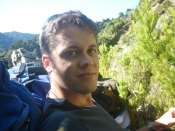Teaching about the genocide in Rwanda
There are different angles from which a history teacher can approach the teaching of genocide. Team planning a unit on the 1994 genocide in Rwanda with a colleague has highlighted the importance of bringing together two of these angles.
In our planning sessions my focus was to develop students’ understanding that events have a multiplicity of interrelated causes and consequences and that the relative influence of those causes differ (Seixas and Morton, guidepost 1 & 2). In contrast, my colleague had spent more time thinking about the ethical dimensions of teaching genocide. He wanted to explore with students how it was possible that humans committed this genocide, why the world did so little to intervene and what implications the topic raised about intervening in contemporary or future genocides.
I describe an overview of two teaching sequences that are embedded within a larger programme of learning below. The overview seeks to demonstrate how we consciously planned to bring together our different approaches when teaching about the genocide in Rwanda.
Lesson sequence 1: Introduction to historical causation
The central inquiry questions for the unit are "How far was Belgian colonialism responsible for the genocide? What is the most significant consequence of the genocide? To kick-start the conversation, students were introduced to the language of causation through a reading of Arthur Chapman's story about Alphonse the camel (2003). By using Chapman's story of what broke the camel's back I reminded students about the different types and categories of causes. Students then read two articles about the genocide (Rwanda: how the genocide happened and Genocide in Rwanda). Students underlined and categorised different types of cause within the text and looked out for any differences in emphasis between the accounts. They took notes and we discussed the extent to which the accounts helped us to answer the main inquiry questions. Both articles were relatively short, which was useful because it meant students could engage deeply with a small amount of text while not overloading their "working memory".
Lesson sequence 2: A strangeness of mind
I started this series of lessons with the announcement that it would be quite different to the previous weeks' focus on historical causation. I told students we would be looking first at the testimony of survivors and then explore what was going though the minds of perpetrators. We watched the harrowing stories of a survivor using a resource called Vanishing Points, produced by an Australian group that has built extensive links to people in Rwanda. The atmosphere of the class was unrecognisable from the previous week. After each video the class simply sat in silence before slowly responding to what they saw with the people they were sitting beside. The written accounts of the perpetrators that we read in a later lesson were nearly as powerful, generating lots of questions about the genocide and human nature in general. For some students, the videos gave them a sense of complete despair. My colleague and I dealt with this together using a technique borrowed from our school's restorative practice programme. We sat students in a circle and confronted the issue head on by asking the class why they thought this topic was an important one for us to learn. Gradually students started to share their ideas. We hope that explicitly talking together about why genocide is important to learn about will help students not to feel such helplessness in the face of such moving and distressing testimony. Time will tell if we succeeded here.
My descriptions of both lesson sequences don't do justice to the complexity and thoughtfulness of the students' engagement with this new learning. After only two weeks into an 8 week unit they are on the way to developing a powerful causal analysis of this genocide. Just as important, they are also beginning to appreciate the complex moral and ethical dilemmas people experienced at the time of the genocide, in the years afterwards and which still confront us today.
References:
Chapman, A. (2003), Camels, diamonds and counterfactuals: a model for teaching causal reasoning, Teaching History, 112.


